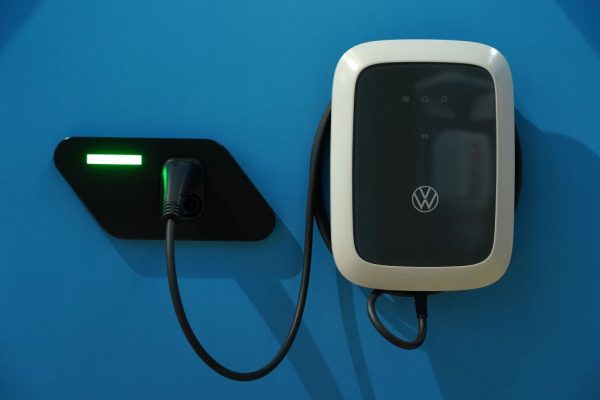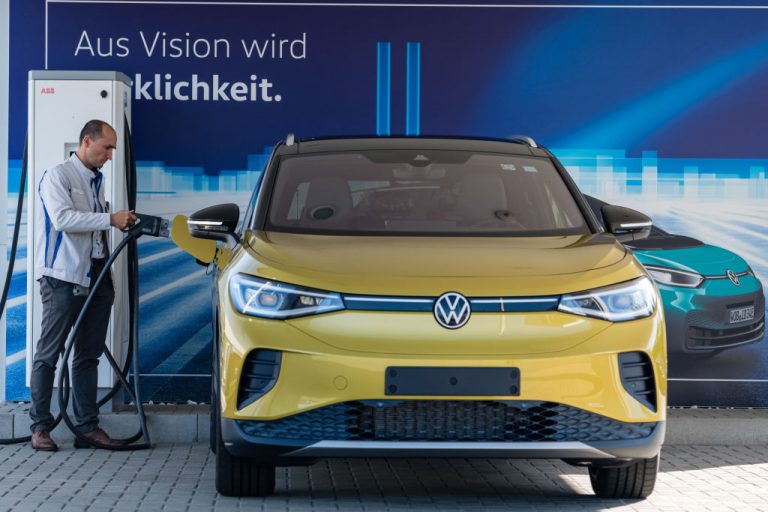German auto giant Volkswagen has appeared to gaffe after a press release claiming the company was rebranding to “Voltswagen” and shifting its focus to electric cars. The electric vehicle reboot of the iconic automaker, however, turned out to be a poorly received and premature April Fool’s joke.
A report by USA Today says Volkswagen issued a press release dated April 29 on March 29, which stated the play on words was not merely a typo, “More than a name change, ‘Voltswagen’ is a public declaration of the company’s future-forward investment in e-mobility.”
“The new name and branding symbolize the highly-charged forward momentum Voltswagen has put in motion, pursuing a goal of moving all people point-to-point with EVs,” said the release.
However, a day later, the company clarified that it was merely a marketing campaign for the maker’s new all-electric plug-in ID.4 SUV, “The renaming was designed to be an announcement in the spirit of April Fools’ Day, highlighting the launch of the all-electric ID.4 SUV and signaling our commitment to bringing electric mobility to all,” said VW spokesperson Mike Tolbert in an email to USA Today.
Playing with fire?
The press release reportedly included a new logo, as well as quotes from Volkswagen executives on the rationale behind the name change. The release appears to have since been scrubbed from the Internet.

Success
You are now signed up for our newsletter
Success
Check your email to complete sign up
While the stunt did create a buzz across social media and garnered attention for VW’s new EV offering, some marketing experts have warned that the embattled German manufacturer may be playing with fire after being caught in the highly controversial 2016 diesel emissions scandal.
Peter Jaworski, a Georgetown University professor, told USA Today “It hurts trust amongst reporters, and companies rely on reporters to tell these stories..They cultivate relationships with these reporters, and it harms those relationships.”
USA Today says it “specifically asked a VW spokesperson if the announcement was a joke and was told no.”
Jaworski also emphasized tension around the concern of climate change as especially sensitive in today’s era, “Climate change is a serious thing..You go, ‘Wow, Volkswagen really cares about the environment,’ and suddenly it’s another prank. They shouldn’t joke about that given their track record.”
VW’s official Press Release page does have a promotional post for the ID.4 on March 29, however.
The electric vehicle sales schtick
In the push to get away from a modern life that has become almost completely reliant on fossil fuels, electric vehicles appeal to drivers who want to make a difference. However, hybrid vehicle offerings are almost always semi-electric drivetrain and battery pack pairings with traditional combustion engines. Pure electric plug-in offerings have often fallen short in terms of the features, cost, and styling the majority of retail buyers both want and need.
The ID.4, a purely electric plug-in with no gasoline combustion, comes in at a starting price of $39,995 USD before fees, taxes, delivery, and PDI. A leaked dealer comparison sheet provided by VW headquarters to its retail salespeople shows an enormous price difference between the new offering and its gasoline competitors in Honda and Toyota.
A mid-trim Toyota Rav4 XLE is $27,660 and a Honda CR-V EX is $27,245 by comparison. Both Japanese models are front wheel drive variants, while the ‘Voltswagen’ is rear wheel drive.
While these options may work for residents of warm climates such as California and Texas, all-wheel drive is virtually a requirement for SUV buyers who live in winter climates. Going AWD adds $3,680 to the price, according to VW’s Build and Reserve platform.
Additionally, electric vehicles do not use a conventional all-wheel drive system with a clutch pack or differential that sends a portion of the engine’s torque to the non-drive wheels when the drive wheels begin to slip. Instead, the AWD upgrade on the ID.4 uses a dual-motor powertrain, which is marketing-speak for the use of an additional electric motor to apply independent torque to the front wheels.
Depending on the specifics of how these dual motor AWD setups are designed, traction in snow, mud, and ice situations may vary considerably in performance compared to conventional AWD systems.
While the ID.4 is reportedly eligible for a $7,500 federal tax credit, the sum is not a direct rebate to the price of the vehicle. The federal tax credit would be applied as a deduction to your income tax, and will not reduce the sticker price, buyer’s monthly payments, or cost of borrowing as a direct cash rebate would.
According to US News, leasees may not be eligible for the tax credit at all, meaning you can only reap the benefit of the federal climate initiative on a cash purchase or direct finance.
EVs all about dollars, cents, and oil
According to the leaked sales document, VW says the ID.4 may save as much as $3,500 over five years of ownership on fuel costs, or approximately $700 per year. However, the ID.4 is primarily intended to be charged at home with a level 2 wall charger, which is sold separately.
An L2 wall charger from Electrify America, who VW has partnered with to provide three years of unlimited charging at fast charge centers throughout most, but not all, of the United States at no additional cost, offers a home charging solution for $649 USD before installation.

As for range, Volkswagen boasts the ID.4 will have a maximum range of approximately 250 miles on a full battery and in optimal weather and city driving conditions, will gain 60 miles of range in 10 minutes of charging at a fast charging center, and can gain “5 percent to 80 percent in about 38 minutes,” according to VW’s promotional website. An overnight charge on the L2 wall charger will take approximately eight hours, by comparison.
According to Techcrunch, VW is using Panasonic batteries assembled in China and Germany, featuring 82KW of power. The vehicle resides on a new MEB electric vehicle platform architecture and uses an AC permanent-magnet-synchronous motor that puts out 201 HP and 229 ft lbs of torque. The AWD version, with its second motor for the front wheels, is rumored to put out 302HP.
The RWD variant will weigh approximately 4500 lbs, more than a thousand pounds heavier than the gasoline powered Rav4 XLE FWD, which is 3405 lbs. Toyota’s own RAV4 AWD Hybrid weighs only 3690 lbs by comparison. The ID.4 also is not quick, putting in 0-60 times around 8.5 seconds compared to a gas Rav4’s 7.7 seconds, according to manufacturer and enthusiast websites.
According to an Oct. 14 post on Volskwagen Dealer website Capistrano Volkswagen, the fuel savings on an ID.4 compared to a Tiguan are negligible, which may deter some retail buyers from taking the electric vehicle plunge, “The VW ID.4 costs about $10 to fill at home and has a 250 miles range. Which means every mile costs about $0.04,” says the dealer.
“Let’s compare that to its fuel-efficient sibling, the 2020 Volkswagen Tiguan. As of writing, the average cost of gas in the US is $2.17 per gallon. The 2020 Tiguan has a 15.3-gallon tank and a max range of 443 miles. To fill from empty, the 2020 Tiguan costs a bit over $33.20. That’s around $0.07 per mile. For every year of driving (around 12,000 miles) you do, you’ll save just shy of $420 with the ID.4.“
Environmentally conscious electric vehicle buyers would also do well to remember that drawing from the electric grid at home or at a fast charger away from home may still not come from clean energy. Depending on your location, what powers your electrical grid may still be primarily fossil fuels. In a seminar held by the IEEE on Feb. 19 in the aftermath of the Texas winter storm disaster, Texas power engineers revealed the Lonestar State’s 2021 grid capacity was composed of 51 percent natural gas, 13.4 percent coal, and 3.8 percent nuclear.
Wind comprised 24.8 percent and solar only 3.8 percent of Texas’ overall power capacity. When the storm hit, wind and solar were the first to go offline, according to the presentation, which put more strain on Texas’s natural gas and coal-fired power plants.
Follow us on Twitter or subscribe to our email list















